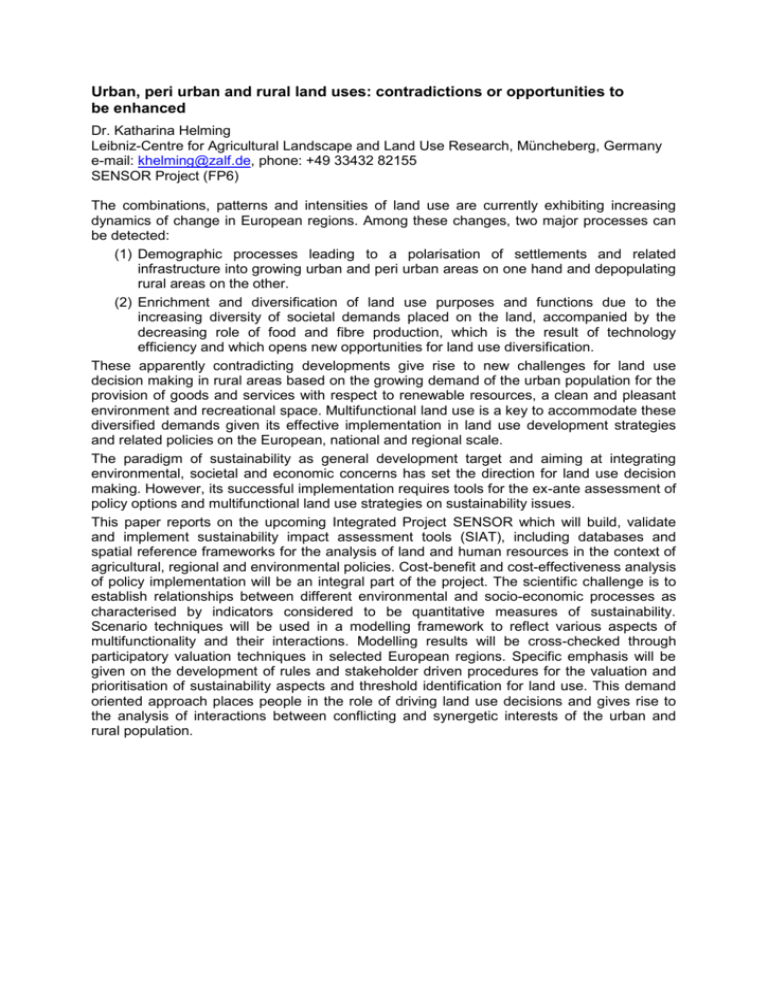Urban, peri urban and rural land uses: contradictions or
advertisement

Urban, peri urban and rural land uses: contradictions or opportunities to be enhanced Dr. Katharina Helming Leibniz-Centre for Agricultural Landscape and Land Use Research, Müncheberg, Germany e-mail: khelming@zalf.de, phone: +49 33432 82155 SENSOR Project (FP6) The combinations, patterns and intensities of land use are currently exhibiting increasing dynamics of change in European regions. Among these changes, two major processes can be detected: (1) Demographic processes leading to a polarisation of settlements and related infrastructure into growing urban and peri urban areas on one hand and depopulating rural areas on the other. (2) Enrichment and diversification of land use purposes and functions due to the increasing diversity of societal demands placed on the land, accompanied by the decreasing role of food and fibre production, which is the result of technology efficiency and which opens new opportunities for land use diversification. These apparently contradicting developments give rise to new challenges for land use decision making in rural areas based on the growing demand of the urban population for the provision of goods and services with respect to renewable resources, a clean and pleasant environment and recreational space. Multifunctional land use is a key to accommodate these diversified demands given its effective implementation in land use development strategies and related policies on the European, national and regional scale. The paradigm of sustainability as general development target and aiming at integrating environmental, societal and economic concerns has set the direction for land use decision making. However, its successful implementation requires tools for the ex-ante assessment of policy options and multifunctional land use strategies on sustainability issues. This paper reports on the upcoming Integrated Project SENSOR which will build, validate and implement sustainability impact assessment tools (SIAT), including databases and spatial reference frameworks for the analysis of land and human resources in the context of agricultural, regional and environmental policies. Cost-benefit and cost-effectiveness analysis of policy implementation will be an integral part of the project. The scientific challenge is to establish relationships between different environmental and socio-economic processes as characterised by indicators considered to be quantitative measures of sustainability. Scenario techniques will be used in a modelling framework to reflect various aspects of multifunctionality and their interactions. Modelling results will be cross-checked through participatory valuation techniques in selected European regions. Specific emphasis will be given on the development of rules and stakeholder driven procedures for the valuation and prioritisation of sustainability aspects and threshold identification for land use. This demand oriented approach places people in the role of driving land use decisions and gives rise to the analysis of interactions between conflicting and synergetic interests of the urban and rural population.











